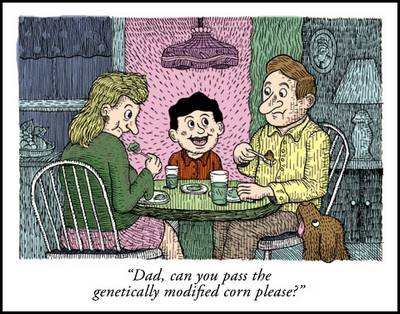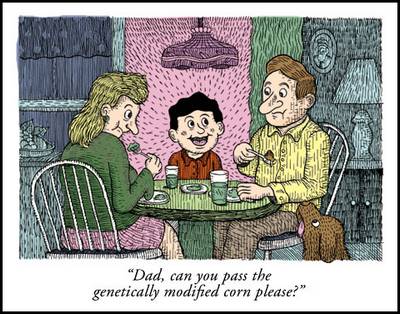What’s wrong with modifying corn by introducing a gene from another plant into its DNA to make it drought resistant?
What’s wrong with modifying rice DNA to need less water and produce greater yields per hectare to feed the growing population of the Developing World?
What’s wrong with adding genetic information to a food crop that makes it store more Vitamin A leading to a decline in blindness in so many Developing World children?
What could possibly be wrong with any of these changes to plants?
Well, if you looked at the agricultural headlines this week you would conclude that there is something terribly wrong with GMO, also known as transgenic crops, or “Frankenfoods” by those opposed. Here are some of those stories:
In France yesterday, September 15, 2012, the government pronounced GMO crop cultivation as a no no even though GMO corn is allowed in the European Union of which France is a partner and the principal crop grower. Farmers were pressuring the French government to lift the ban but concerns about GMO crops and the use of pesticides and chemicals (the latter two an entirely separate issue) has led to the government’s decision.
California is currently dealing with Proposition 37, a proposed new law called “The California Right to Know Genetically Modified Food Act.” The intent is to label all GMO crops so that consumers can make knowledgeable choices. Opposing this proposed law – the World Health Organization, the FDA, the USDA, and agricultural and chemical giants like Monsanto and DuPont, the latter two, leaders in developing GMO crops.
Last week the debate on GMO crops heated up in New Zealand where no genetically modified seed can be planted in the open although 43 applications have been approved by government regulators to import GMO foods into the country for sale including soybeans, canola, corn, potatoes, sugar beets, rice and wheat.
Today no foods in North America are branded GMO. Yet much of what we eat in fresh produce is GMO. And 60-70% of processed foods contain GMO. In introducing Proposition 37 in California, all foods on grocery shelves would bear a GMO label. Would that be a bad thing considering most of you reading this article are probably unaware of just how much GMO you ingest each day?
Transgenic or GMO crops are artificially modified plants. Where we have cross bred plants in the past to create new varieties to produce better yields, and resistance to insects and weeds, now laboratories at companies like Monsanto, and DuPont are inserting genetic information from different plant and animal species into food crops. There doing this to improve nutritional content, increase yields, and fight off disease and predators.
The unforeseen has many experts raising the issue of risks such as:
- allergic or toxic side effects to GMO crops
- transfer of GMO traits to non-GMO crops grown nearby
- development of super bugs and super weeds adapted to GMO crops leading to an escalating arms race between GMO creators and nature
But couldn’t the same be said about cross breeding to create new varieties of crops?
The real issue around GMO crops is transparency. They are here now and for consumers, knowledge is empowering. So why not let people know where GMO crops are in the food supply?
Researchers argue that current GMO crops contain one-gene addition and that we know the origin of those genes and know the history of our interactions with them in the food supply because they come from other food sources. So the risk factor of a bad reaction is very low. But could you imagine if a peanut gene were introduced into a tomato for some reason, and how a parent of a child with a peanut allergy would feel if they bought one of those tomatoes and the child had an autoimmune reaction?










